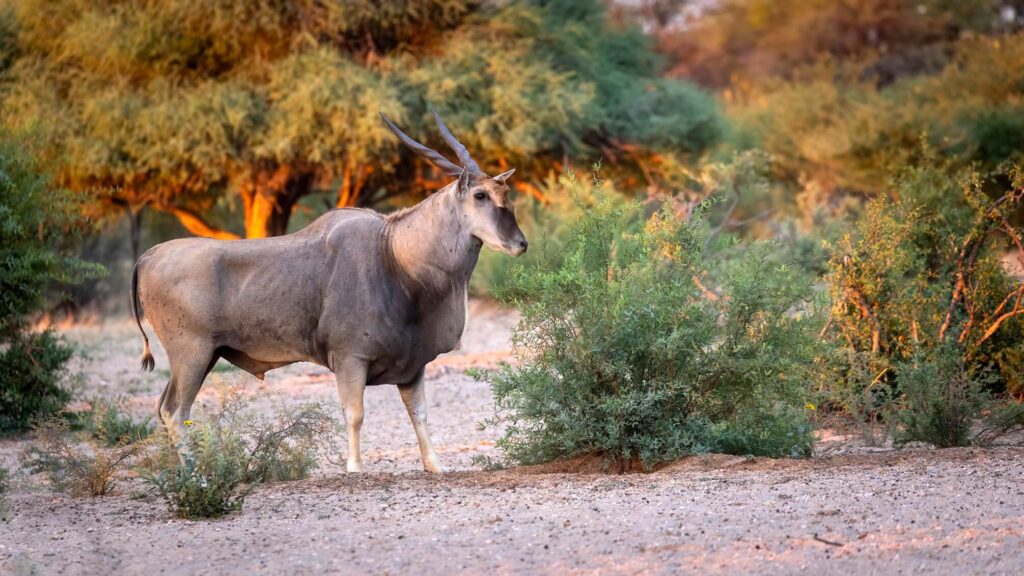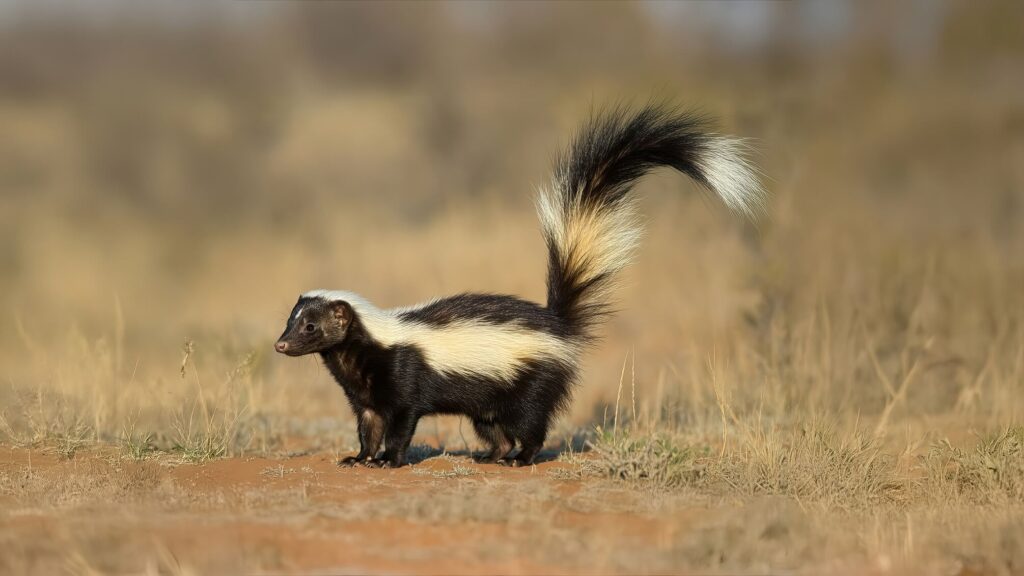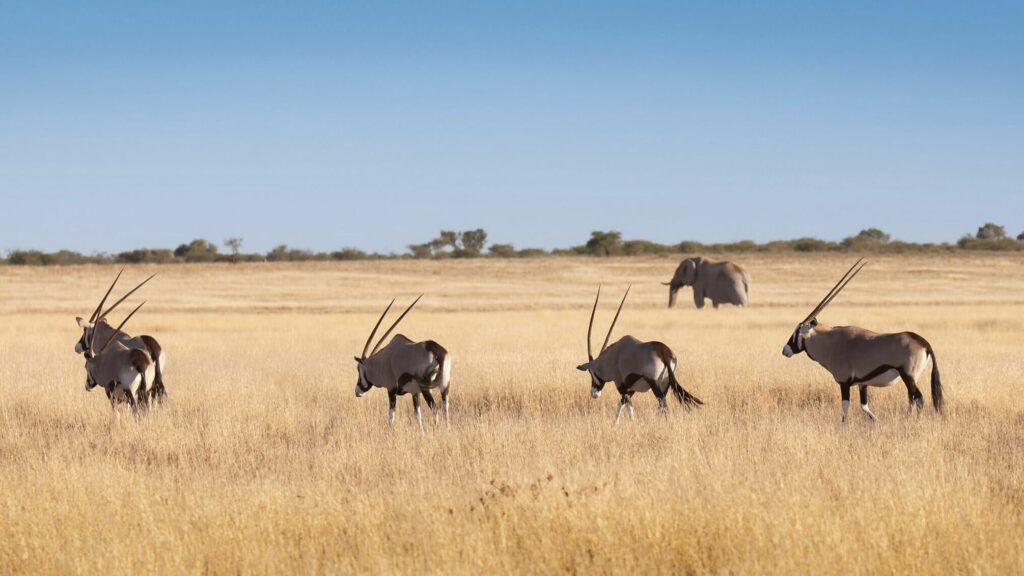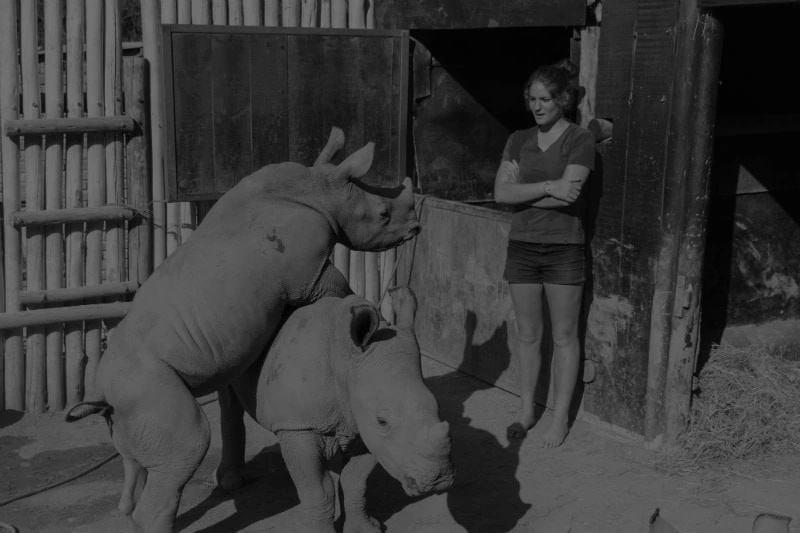Cape Fox: Master of Desert Survival
Cape foxes, also known as the South African silver fox or the Cape silver fox, are small, nocturnal mammals native to southern Africa. They are members of the Canidae family, which also includes dogs, wolves, and coyotes. These foxes are known for their silver-grey fur and their distinctive, black-tipped ears. They are typically active at night, spending most of their day hiding in dens or burrows.
The Kalahari Desert in southern Africa is home to a unique population of cape foxes. These animals are well-adapted to the harsh, arid conditions of the desert and play an important role in the ecosystem. Another important adaptation is their ability to conserve water. These foxes in the Kalahari have developed several mechanisms for reducing water loss, such as panting to cool down instead of sweating, and being able to reabsorb water from urine. This allows them to survive in an environment where water is scarce.

Cape fox seen at sunrise in Khamab Kalahari Reserve
Cape Fox: The Kalahari Desert’s Silver-Furred Survivor
The Cape Fox, a small, captivating canid, thrives in southern Africa’s diverse habitats – even the unexpected harshness of the Kalahari Desert. Let’s explore its unique adaptations, fascinating life, and the threats it faces.
Quickfire facts:
- Weight: Adult cape foxes typically weigh between 2.5 to 4.5 kg (5.5 to 9.9 lb.).
- Speed: Cape foxes are fast runners, capable of reaching speeds of up to 48km/h (30mph).
- Diet: Cape foxes are opportunistic feeders, which means they will eat a wide variety of food. Their diet includes insects, small mammals, birds, reptiles, and fruit. They are also known to scavenge for food.
- Behavior and Social Structure: They are solitary animals, except for breeding pairs and mothers with their young. They are territorial animals, marking their territory with urine and feces. They are active at night and spend most of their day hiding in dens or burrows.
- Reproduction: Cape foxes breed once a year, usually between April and May. Gestation period is around 50-60 days. Litters typically consist of 2-4 pups. Young are born blind and deaf and are dependent on their mother for the first few months of their lives.
- Threats: Habitat loss due to human development and agriculture is the biggest threat to Cape foxes. They are also hunted for their fur and are considered a pest by some farmers, as they may prey on domestic poultry and even lambs. Disease, such as mange, can also be a problem for Cape fox populations.
- Conservation Status: Cape foxes are listed as least concern by the International Union for Conservation of Nature (IUCN). However, their population is decreasing in some areas due to habitat loss and hunting. Some organizations are working to protect Cape foxes and their habitats through conservation and education efforts.
Taxonomy and Origins: A True Fox
The Cape Fox (Vulpes chama) belongs to the Canidae family, alongside dogs, wolves, and coyotes. It is classified as a “true fox” within the genus Vulpes. Fossil evidence suggests foxes have roamed Africa for millions of years.
Size and Appearance: Built for Speed and Stealth
This fox is a relatively small canid, weighing 2.5-4.5 kg (5.5-9.9 lbs) and standing around 35 cm (14 inches) tall at the shoulder. Its most striking feature is its silvery-gray fur with a black-tipped tail, providing perfect camouflage in many environments. Large, pointed ears aid in both hearing and cooling down in the desert heat.
Desert Adaptations: Master of Water Conservation
This fox has several adaptations that allow it to thrive in the Kalahari. It conserves water by panting instead of sweating, minimizing water loss. Its kidneys are highly efficient, reabsorbing water from urine. A diet of insects, fruit, and small prey provides additional moisture.
Social Life: Solitary, But Flexible
While most Cape Foxes are solitary or live in mated pairs, Kalahari populations exhibit a surprising twist! They can form larger groups, likely an adaptation to the challenging environment. This cooperation helps them locate food, defend territory, and potentially even raise young communally.
Temperament: Clever and Cautious
This animal is known for its intelligence and cautious nature. It’s a skilled hunter but also an opportunistic feeder, adapting its diet as needed. While not typically aggressive towards humans, a Cape Fox will defend itself if cornered.
Reproduction: Raising the Next Generation
A Cape Fox typically breeds once a year, with a gestation period of 50-60 days. Females give birth to litters of 2-4 pups in underground dens. Pups are born blind and helpless but develop quickly, leaving the den to hunt with their parents around three months old.
Distribution: Wide-Ranging but Patchy
Historically, it had a wider distribution across southern Africa. Today, it’s found in grasslands, scrublands, and even semi-arid regions like the Kalahari. Its populations are fragmented due to habitat loss and human conflict.
Threats and Conservation: A Precarious Balance
The greatest threat to these foxes is habitat loss due to agriculture and development. It is also hunted for its fur and sometimes persecuted by farmers who fear for their livestock. Disease outbreaks can also impact populations. Conservation efforts focus on habitat protection, reducing human-wildlife conflict, and education initiatives.
FAQs: Your Cape Fox Questions Answered
The Value of the Cape Fox: More Than Meets the Eye
The Cape Fox isn’t just beautiful – it plays a vital role in ecosystems by controlling insect and rodent populations. By understanding and appreciating its remarkable adaptations, we can champion its protection for generations to come. Help us to protect their incredible Kalahari habitat by supporting our work.

Cape fox at Khamab Kalahari Reserve
Want to see a Cape Fox for yourself? Our Project let’s you join a Kalahari Safari to help African Wildlife or Contact Us for any other questions or read our Testimonials!
Learn More about these foxes here!






